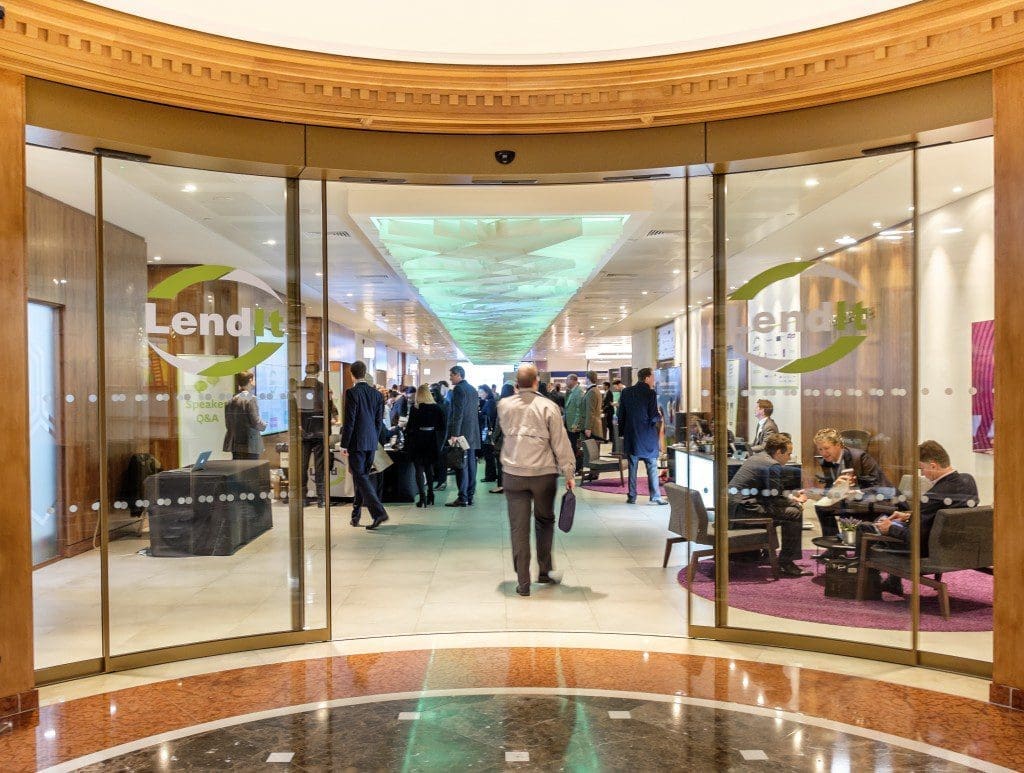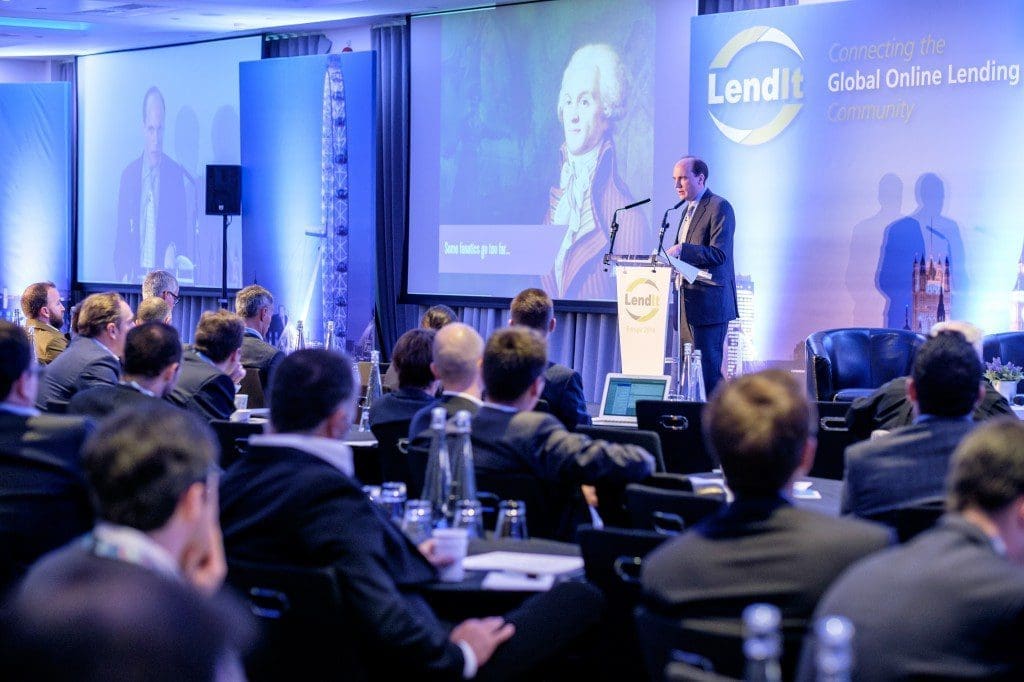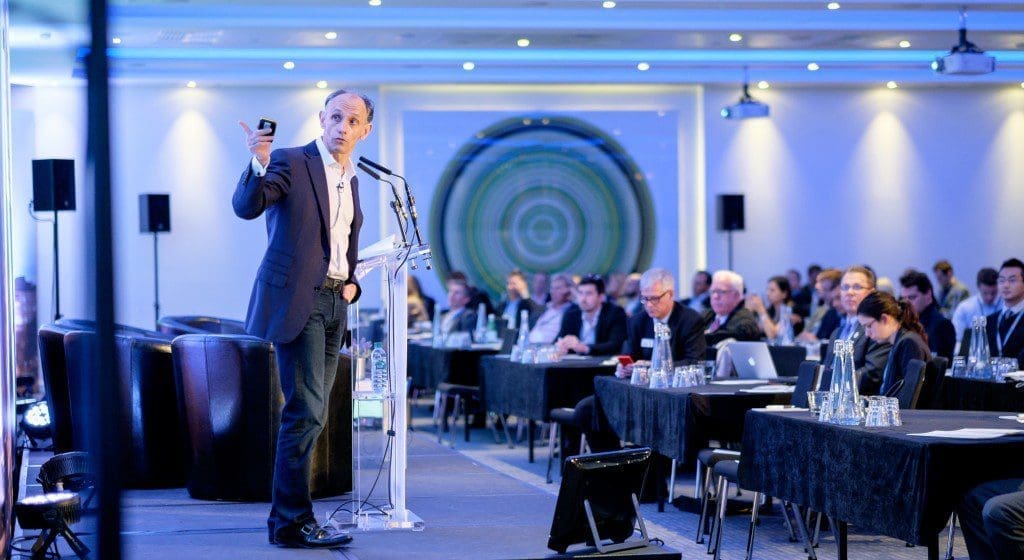This past Monday was the largest P2P lending event ever held in Europe. As many of you know, I am a co-founder and part-owner of LendIt so I was in London for several days preparing and working this event. We ended up with 456 attendees from 34 countries at LendIt Europe with just over 50% coming from the UK. Surprisingly, we also had many people make the trip over from the US.
LendIt Europe was held in the heart of London’s financial district at a modern conference space at 155 Bishopsgate. It was broadcast live online where people from all over the world could tune in. I know of a few Lend Academy readers who set their alarm early to catch the opening keynote.
Speaking of opening keynotes, the event was kicked off by Rhydian Lewis, the CEO and co-founder of Ratesetter. He took us back to 18th century France and the time of the French Revolution comparing that time with the revolution that is happening in financial services. It was an entertaining and thought provoking presentation and was a fitting opening to the conference.
Next up was the always lively Cormac Leech of Liberum Capital. He provided us with some detailed statistics and predictions including this gem: the market in the US and UK will reach $40 billion by the end of 2016. He also predicted that yields would go down in the US over the next two years but will increase in the UK. But when P2P lending becomes eligible for ISAs, presumably in 2015, Leech predicted that this will lead to an additional £47 billion in new retail investor money and eventually that will drive down yields.
In his keynote Samir Desai, the CEO and co-founder of Funding Circle, talked about the similarities and differences between the US and UK market. It was fascinating for me to learn that the average small business borrower on Funding Circle in both the UK and US were remarkably similar. They have been in business roughly the same length of time (8 years), have about the same number of employees (8-10) and request a similar amount of money. But the interest rates borrowers pay in the US (and therefore returns to investors) are much higher.
Giles Andrews, the CEO and co-founder of Zopa, took us back to the beginning of the industry and described what it was like to be the first P2P lending company. While he celebrated the growth that the industry has experienced he also provided a cautionary tail. He shared this amazing statistic that between 2007 and 2008 defaults at Zopa went up by a factor of 10 due to the financial crisis but Zopa was still able to maintain a positive return to investors. He also announced a new partnership with AltFi Data where Zopa will be sharing the details of their loan book for the first time.
One of the most anticipated keynotes of the day was that of Nigel Morris, the co-founder and former president of Capital One. He is clearly bullish on the industry with his venture capital firm, QED Investors, having made several investments in the space including Prosper, SoFi, Orchard and CAN Capital to name just a few. But at the same time Morris made the point that in the US we are somewhat hamstrung by lending regulations – there is so much great predictive data that we are not allowed to use in this country. Other countries don’t have that same issue. He also pointed out that there was disruption in the lending industry before with companies like MBNA, Providian, NextCard and Metris using new approaches a couple of decades ago. But most of these companies are no longer around, many going out of business. It was a sober warning to everyone in the crowd. Morris emphasized this one point: “If you don’t fully understand lending you shouldn’t be in this business”.
Our final keynote of the day was from Bryan Zhang, the lead researcher behind the recent Nesta report on the UK P2P lending market. He presented some of the highlights from his team’s research that included interviews with thousands of UK P2P borrowers and lenders. Some of his more interesting findings were that 54% had actually received a loan offer from a bank but went with a P2P loan; 96% of borrowers would approach P2P lending first if they needed another loan; lenders come from all income levels but tend to skew older with 75% 45 years of age or older; 65% of lenders said they would lend more money if P2P lending became ISA-eligible.
Throughout the day there were also many excellent panels as well as company demos. Some major themes emerged from all these discussions. The importance of transparency was repeated often – in fact some speakers suggested that the only way to avoid a future blow-up at a platform is for everyone to be committed to transparency of their data. While the day was very positive overall, it lacked some of the exuberance of previous LendIt conferences and I think that is a good thing. The European players realize there is a big opportunity here but that challenges are everywhere.
I will leave with a sober thought from one of the true leaders in the UK P2P lending industry. Samir Desai said in the Q&A that “a recession-like environment will be the making of the P2P lending sector”. While a recession could be very bad news for some platforms clearly Desai thinks that major platforms like Funding Circle will be in a very good position to weather such a storm.
Every session was recorded and will be made publicly available in the coming weeks. You can download slides from all keynote presentations here. And you can read more coverage of LendIt Europe on the LendIt blog (several articles) Wiseclerk, LendInvest, AltFi and LendLoanInvest.





